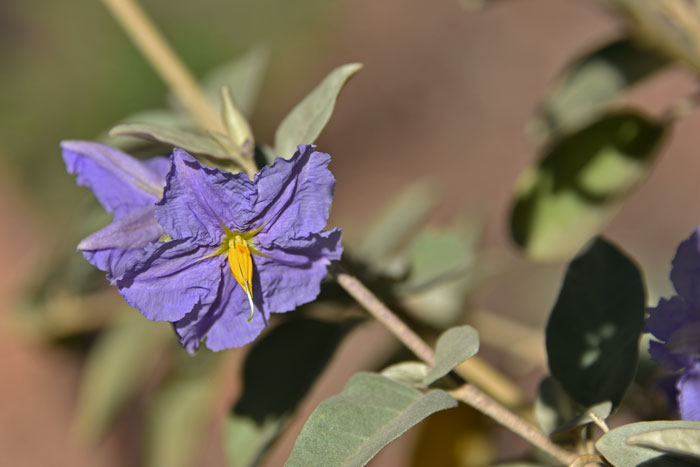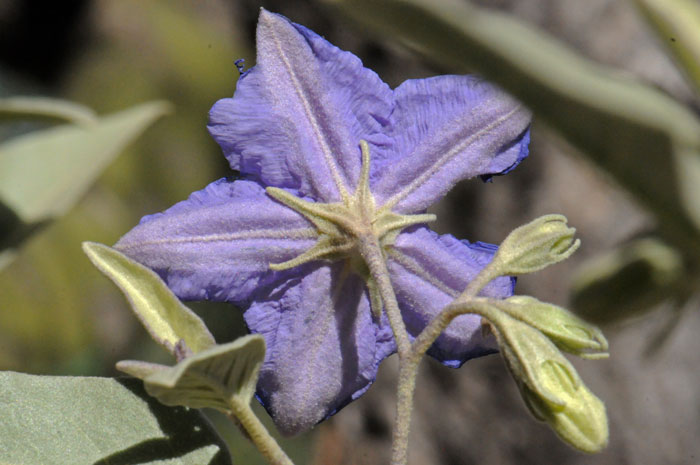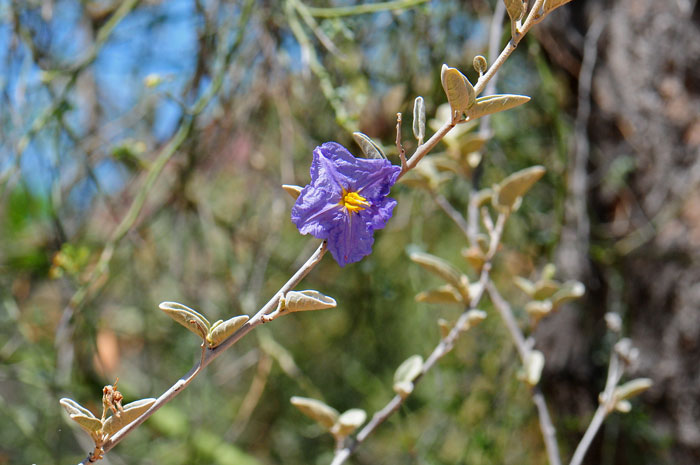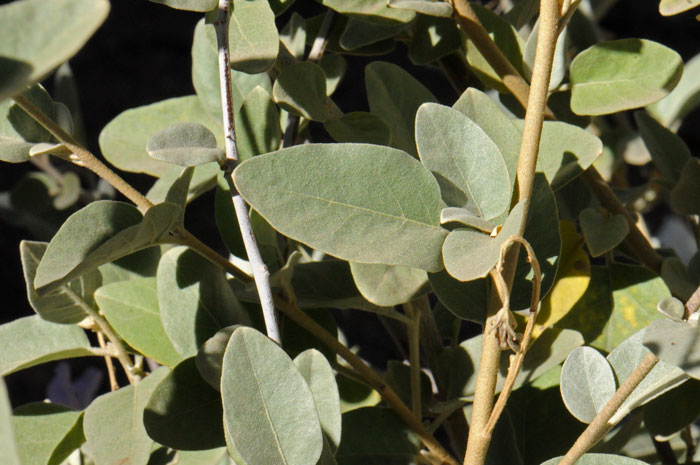Solanum hindsianum, Hinds Nightshade




Scientific Name: Solanum hindsianum
Common Name: Hinds Nightshade
Also Called: Hinds' Nightshade, Sonoran Nightshade (Spanish: Mariola, Ojo de Liebre)
Family: Solanaceae, Nightshade or Potato Family
Synonyms: ()
Status: Native
Duration: Perennial
Size: Up to 6 feet or more.
Growth Form: Forb/herb; plants with stout prickles about ⅓ inch; new growth with stellate hairs;
Leaves: Green, greenish-gray; alternate, margins entire to undulate; shape variable oblong-lanceolate to ovate; bottom surface of leaf (abaxial) densely tomentose.
Flower Color: Purple; actinomorphic; pedicels about ⅔ inch long; calyx about 2-3 times longer than the calyx tube; corolla rotate, about 2 inches in diameter.
Flowering Season: March.
Elevation: 1,500 to 1,800 feet.
Habitat Preferences: Rocky hillsides, often among boulders.
Recorded Range: Solanum hindsianum is extremely rare in the United States where it is found in Organ Pipe Cactus National Monument, Pima, County, Arizona. It is also native throughout Baja California and northwest Mexico.
North America & US County Distribution Map for Solanum hindsianum.
U.S. Weed Information: No information available.
Invasive/Noxious Weed Information: No information available.
Wetland Indicator: No information available.
Threatened/Endangered Information: No information available.
In the Southwestern United States, Arizona there are 18 species of Solanum, in California there are 30 species, Nevada has 8 species, New Mexico has 16 species, Texas has 27 species, Utah has 11 species. All data is approximate and subject to taxonomic changes.
Comments: Solanum hindsianum known only from Organ Pipe Cactus National Monument, Pima County, Arizona.
In Southwest Desert Flora also see: American Black Nightshade, Solanum americanum, Silverleaf Nightshade, Solanum elaeagnifolium, Fendler's Horsenettle, Solanum fendleri, Melon Leaf Nightshade, Solanum heterodoxum, Buffalobur Nightshade, Solanum rostratum and Purple Nightshade, Solanum xanti.

